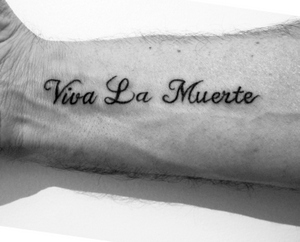 Colin Marshall sits down in Mexico City’s Colonia Condesa with Kurt Hollander, photographer, filmmaker, magazine editor, and author of Several Ways to Die in Mexico City: An Autobiography. They discuss his microbiologically informed view of life; the presence of death in Mexico, especially since people there now die developed-world deaths and, to an extent, developing-world deaths; his first enjoyment of Mexico’s working-class culture, and his perspective, as an American, on American cultural encroachment; his earlier life on New York’s Lower East Side, a barrio which prepared him for the one-huge-barrio that is Mexico City; the importance of “doing New York right” to subsequently spending time in other major cities; what he learned publishing the magazine The Portable Lower East Side; what kind of immigration makes a place more interesting, and what kind of immigration makes a place less so; how moving to Mexico City presented him the greatest learning curve of his life; when, and how, he got sick and didn’t seem like he would get better; how danger makes culture, which he considers to be the accumulation of survival strategies; what it means to adapt to a culture, and what bearing doing so has on your survival; his strategies for seeking out the remaining strongholds of working-class culture, such as riding the Metro and exploring the miniature economies that grow in its stations; the importance of the pulqueria, and other places Mexicans warn foreigners away from; and how he has never felt in harm’s way in Mexico City, despite respecting nothing, criticizing everything, and always going with the more dramatic story.
Colin Marshall sits down in Mexico City’s Colonia Condesa with Kurt Hollander, photographer, filmmaker, magazine editor, and author of Several Ways to Die in Mexico City: An Autobiography. They discuss his microbiologically informed view of life; the presence of death in Mexico, especially since people there now die developed-world deaths and, to an extent, developing-world deaths; his first enjoyment of Mexico’s working-class culture, and his perspective, as an American, on American cultural encroachment; his earlier life on New York’s Lower East Side, a barrio which prepared him for the one-huge-barrio that is Mexico City; the importance of “doing New York right” to subsequently spending time in other major cities; what he learned publishing the magazine The Portable Lower East Side; what kind of immigration makes a place more interesting, and what kind of immigration makes a place less so; how moving to Mexico City presented him the greatest learning curve of his life; when, and how, he got sick and didn’t seem like he would get better; how danger makes culture, which he considers to be the accumulation of survival strategies; what it means to adapt to a culture, and what bearing doing so has on your survival; his strategies for seeking out the remaining strongholds of working-class culture, such as riding the Metro and exploring the miniature economies that grow in its stations; the importance of the pulqueria, and other places Mexicans warn foreigners away from; and how he has never felt in harm’s way in Mexico City, despite respecting nothing, criticizing everything, and always going with the more dramatic story.
Download the interview from Notebook on Cities and Culture’s feed or on iTunes.
Post a Comment